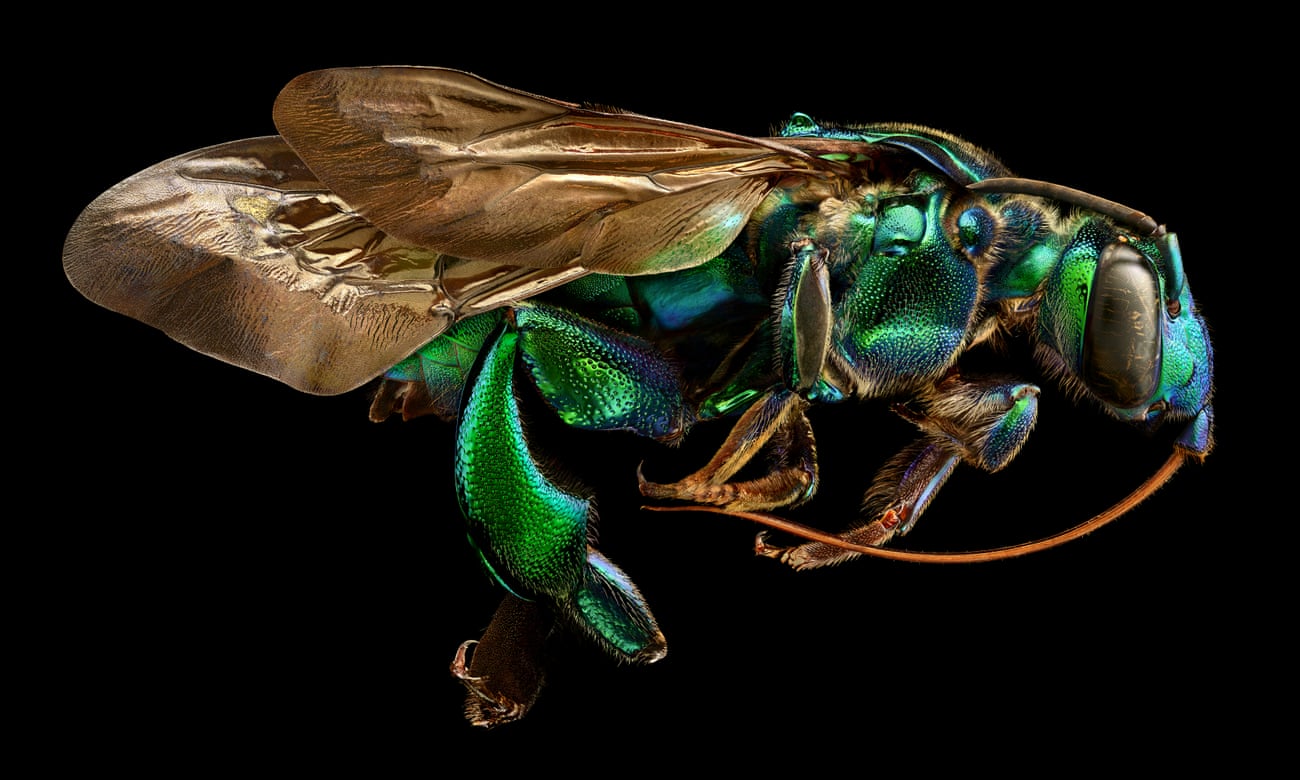Two years ago, exhausted from the frantic pressures of business portraiture, photographer Levon Biss began attempting to find a way to relax. His son Sebastian, then six, determined the solution for their lower back lawn. “My boy likes bugs,” says Biss. “He’s continually in the garden attempting to find and play with them. I commenced capturing bugs he’d caught so that he may want to see them truly and be pleased with locating them.” Making targeted portraits of insect specimens proved to be the suitable antidote to the cause-happy, “disposable” photography that Biss feels is the current style. “I desired a task that made me assume, that became a task,” he says. He regularly advanced a specialized and demanding method, which only a photographer of extreme endurance and dedication ought to sustain, Global Amend.

First, the pinned insect is established on an adapted microscope stand before a digicam with a macro lens. Biss then divided the insect into 30 sections, photographing one at a time at near range. “While you get to this magnification,” he explains, “the intensity of the field is so shallow, there’s only a minute aircraft of consciousness.” To render, for example, a whole wing-casing in awareness, it should be photographed around 750 instances, with every image taken 10 microns apart. Those 750 photos are then compiled into a composite using sophisticated software programs.
A terrific-Necked Dung Beetle
fb Twitter Pinterest
A remarkable-Necked Dung Beetle image: Levon Biss
finally, the 30 sections should be mixed, which poses its own issues. “Due to the contours of a watch,” says Biss, “it has to be lit otherwise to a hairy leg or an antenna,” which means that the sections should be cautiously sewn collectively, allowing for divergences in color and perspective. “The method for me is as a great deal a part of it because of the final picture,” says Biss. Fortunately, he feels this: every minutely detailed final portrait produces eight 000 individual snapshots and at least three weeks’ work.
50 Years of Flora and Fauna Photographer of the Year – in photos
View gallery
READ MORE :
- Need a cheesecake recipe? Follow these expert tips.
- 5 Interview Tips to Find the Long-Term Employee
- Game of Thrones: Jon Snow has all the answers about season six
- Seven Ways to Keep Your Dying Android Phone or iPhone Alive
- Hunt for new Ofsted chief inspector of schools reaches final stage
While the garden failed to yield sufficient new subjects, Biss dental speculative electronic mail to the Oxford University Museum of Natural History requesting help. “I used to be right away offered,” says Dr. James Hogan, an entomologist at the museum. “He had the snapshots on his computer and simply saved zooming in and zooming in.” Hogan became astounded by the element level and the innovative manner the insects have been exposed: “Clinical specimens tend to be very. They appear lit, while Levon has brought them alive and created insect photographs.” Hogan delved into the museum’s 5m-sturdy collection of pinned bugs, sending Biss domestic with creatures along with the notable-necked dung beetle and the branch-backed treehopper, specimens the public rarely receives to look. Biss has finished more than 20 insect pix, big 3-meter prints of which will be exhibited in the museum starting 27 May.

Apart from the snap shots’ unearthly beauty, they also have valid clinical deserves. Due to the fact most of the insects are slightly greater than a centimeter in the period, the finer info of their textured surfaces should not be visible to the bare eye. The entomological period for this texture is “micro sculpture” – also the call Biss has given the assignment – and the most arresting factor of the series is the tactile landscape of the bugs’ bodies while seen at close variety.
A branch-subsidized Treehopper
fb Twitter Pinterest
A branch-sponsored Treehopper photo: Levon Biss
“till you see them up near – I imply up close,” says Biss, “you’ve got no idea that each of the high-quality hairs on a blowfly’s wings is a one-of-a-kind form or that the commonplace floor beetle has perfectly geometric hexagonal dimples throughout it.” Biss becomes particularly enthralled to research that the bright shades of the bugs are not due to a pigment, which could fade, but the refraction of light off their delicately textured surfaces. “I like that go-over – the micro sculpture and the color are related,” he says. “I was operating on a tri-colored jewel beetle the opposite day that become gathered by way of AR Wallace – a current of Darwin’s. This insect is one hundred sixty years antique and is complete of color.”
Photographers and entomologists have special preferences for many of the photos. Biss favors the orchid cuckoo bee for the visible effect of its bright greens. At the same time, Hogan has a soft spot for the Marion flightless moth – an exceptionally esoteric creature from the subantarctic Indian ocean that lives at the residue accumulating in albatross nests. The challenge isn’t over, but: “I haven’t shot an insect for a month or so, and James said, ‘Are you equipped to head once more?’ I stated, ‘Yeah, let’s move for it.’”
First, even though Biss will see his private venture exhibited on a very public scale, a revel that Sebastian, now eight, relishes. “He’s proud because he thinks it’s him that began this complete aspect up – which it becomes,” says Biss. “I’m looking forward to taking him to the exhibition; that’ll be pretty a candy second, I suppose.”
Microsculpture might be exhibited at the Oxford University Museum of Natural Records from 27 May to 30 October, with an images workshop from Levon Biss on nine July.




